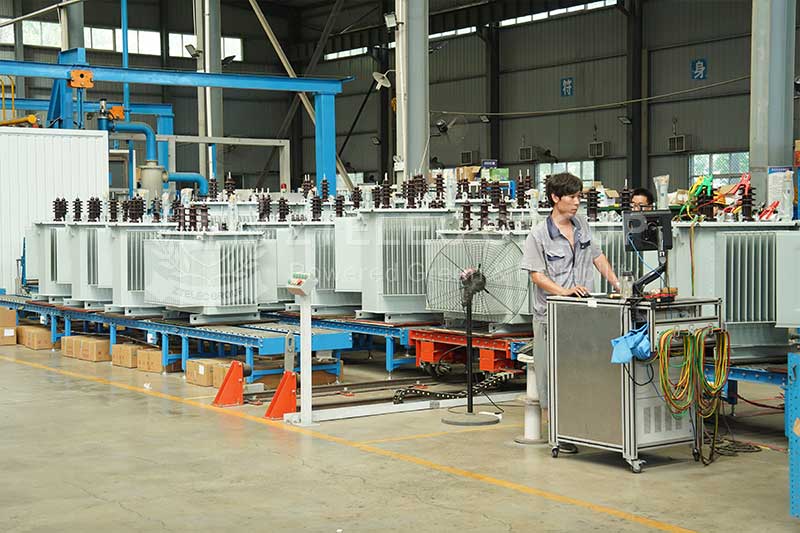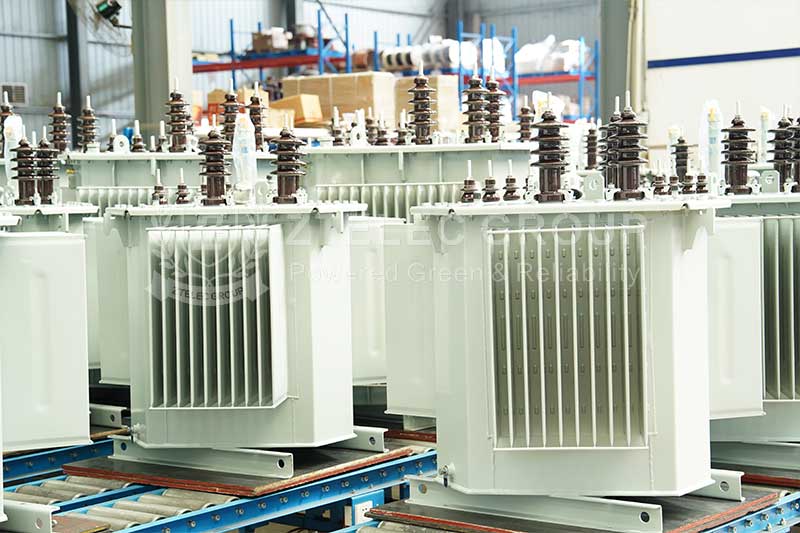Causes of Oil Leakage in Oil-Immersed Transformers and Operating Temperature
In modern power systems, oil-immersed transformers play a crucial role as essential equipment for electrical energy transmission and conversion, widely used in power generation, transmission, and distribution. Their main function is to convert high-voltage electrical energy into low-voltage, satisfying the needs of various electrical devices through the principle of electromagnetic induction. However, in practical operation, oil-immersed transformers often face the issue of oil leakage, which not only affects the normal functioning of the equipment but may also lead to safety hazards and economic losses. Therefore, it is particularly important to understand the causes of oil leakage in oil-immersed transformers and their impact on operating temperature.

Ⅰ. What is the Working Principle of Oil-Immersed Transformers?
The working principle of oil-immersed transformers is based on electromagnetic induction. They primarily consist of three main parts: the core, winding, and insulating oil. The core is used to form the magnetic flux, the winding is responsible for the transmission and conversion of electrical energy, and the insulating oil serves multiple functions including insulation, cooling, and flame resistance. Generally, the operating temperature of the insulating oil inside the transformer is closely related to external environmental temperature, load conditions, and the design of the transformer. Normally, the operating temperature of a transformer should be controlled to below 65°C.
Ⅱ. What are the Causes of Oil Leakage in Oil-Immersed Transformers?
The causes of oil leakage in oil-immersed transformers can be divided into the following categories:
1. Manufacturing Defects in Transformers
During the production process, improper welding, oil filling, sealing, and other processes may lead to potential oil leakage risks early in the transformer’s life. Particularly in critical areas such as flanges, joints, and valves, failure to strictly control quality can easily result in oil leakage.
2. Operating Environment of the Transformer
Oil-immersed transformers are usually installed outdoors or in factory environments, subject to temperature changes, humidity, acid-alkali corrosion, vibrations, and other factors. Especially under extreme weather conditions, the casing material of the transformer may crack due to thermal expansion or contraction, causing oil seepage. Additionally, the installation position of the transformer concerning other equipment may also lead to oil leakage due to improper maintenance or non-standard assembly.
3. Operating Load of the Transformer Itself
When a transformer operates under overload, the internal temperature rises, the viscosity of the insulating oil decreases, and its fluidity increases, leading to weakened sealing performance of the oil seal, resulting in easier leakage of oil to the outside. Moreover, excessively high operating temperatures may also cause aging of insulation materials, thereby reducing their ability to withstand leakage.
4. Improper Maintenance of the Transformer
Regular maintenance is a critical measure to ensure the safe and reliable operation of oil-immersed transformers. If maintenance is inadequate—for example, failing to regularly test oil quality, timely replacing aging insulation materials, or neglecting inspections of transformer facilities—the likelihood of insulating oil leakage will significantly increase. Regular inspections, maintenance, and updates are vital for enhancing the lifespan and stability of the transformer.
5. Aging of Transformer Equipment
As the service life of a transformer increases, its metal and insulation materials inevitably age, leading to issues such as the aging of wire insulation and oil pipe seals, which will ultimately cause oil leakage. In oil-immersed transformers that have been in operation for many years, particular attention should be paid to the aging of components like oil seals and insulation gaskets.

Ⅲ. How Does Oil Leakage Affect Transformer Operating Temperature?
The operating temperature of a transformer is closely related to the occurrence of oil leakage. When a transformer experiences oil leakage, its insulation and cooling capacity decline, which can cause abnormal temperature increases. The reduction of insulating oil means that the materials originally responsible for heat transfer are compromised, resulting in more heat generated within the transformer without an effective way to dissipate it, ultimately leading to overheating of the equipment. This not only accelerates the aging of the equipment but may also cause electrical faults, and in extreme cases, lead to transformer explosions or fires with severe consequences.
Simultaneously, abnormal temperature increases in the transformer may also impact the normal operation of surrounding equipment. Therefore, when oil leakage occurs in a transformer, immediate detection, repair, or replacement should be undertaken to prevent a chain reaction caused by rising temperatures.
Ⅳ. How to Prevent Oil Leakage in Transformers? What Measures Can Be Taken?
To minimize the risk of oil leakage in oil-immersed transformers and enhance the stability of equipment operation, the following measures are very important:
1. Regular Inspection and Maintenance: Ensure that the transformer undergoes regular inspections annually, focusing on the condition of critical areas such as welding and sealing to ensure the quality of the insulating oil is good.
2. Improve installation processes: During the installation and connection of transformers, ensure the use of high-quality materials and strictly control the workflow, especially regarding the sealing treatment of flanges and valves.
3. Monitor operational status: Use advanced monitoring equipment to detect the operational status of transformers. If any issues such as abnormal temperatures or decreased oil levels are found, prompt measures should be taken to address them.
4. Environmental management: Choose suitable installation locations for transformers, avoiding operations in extreme weather, damp, or corrosive environments to ensure a good operating environment for the equipment.
5. Develop emergency plans: Create detailed emergency plans to address potential oil leakage situations, including detection, handling, and recovery processes, ensuring rapid and effective responses in the event of issues.
The oil immersion transformer’s oil leakage problem not only affects its normal operation but can also pose serious safety hazards. Therefore, understanding the causes of oil leakage and implementing effective preventive measures are crucial for ensuring the safe and stable operation of transformers. Through timely maintenance, monitoring, and strict working standards, the risk of oil leakage can be effectively reduced, ensuring the safe use of electrical equipment. In an era where the safety of power facilities is increasingly emphasized, all types of electric companies and maintenance units should prioritize the issue of oil leakage in oil-immersed transformers, promoting the healthy and sustainable development of the power industry.
- more+releated article
- 2026-01-04Common Power Transformer Faults: Causes, Solut
- 2025-12-312026 New Year Holiday Notice
- 2025-12-31Operation, Maintenance, and Service Life Manag
- 2025-12-30How to Select a 100 kVA–500 kVA Distribution
- 2025-12-29The Impact of NHN NMN Composite Insulation on
- 2025-12-26Practical Application of GPO-3 Insulation Boar
- 2025-12-2510kV Transformer Replacement Timeline: Install
- 2025-12-25Low Smoke EN45545 GPO3 UPGM203 Laminated Board
- 2025-12-24Merry Christmas — ZTelecgroup Christmas Cele
- 2025-12-24How to Select a Suitable 50kVA–500kVA Distri





